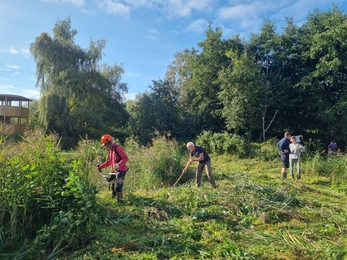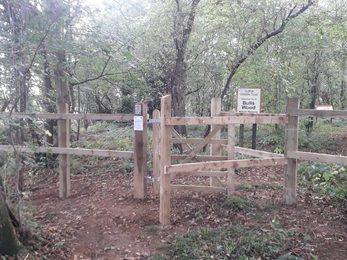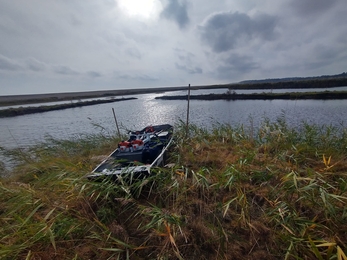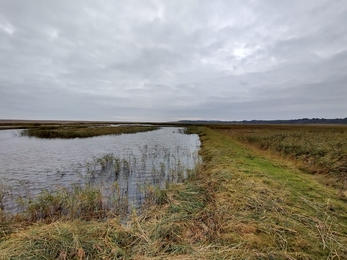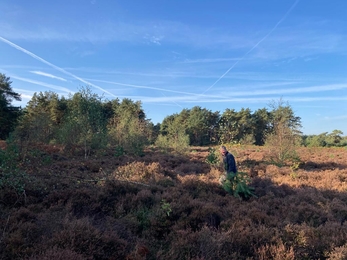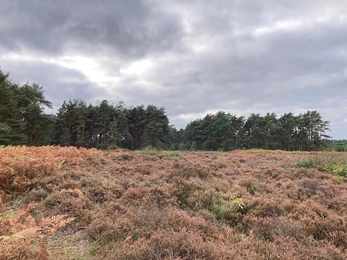Weekly wild news from our reserves – 22 October 2021
Yellow stagshorn – Dan Doughty
We’ve had some exciting night time activity at Carlton Marshes recently. A family of otters seemed excited to meet another adult on river bank. Also, a fox looked startled when a Chinese water deer emerged from the reeds. In the day time, bird activity has been equally thrilling with sightings of pectoral sandpiper, green sandpiper, 11 black tailed godwit and swallow as well as Cetti's warbler calling and several hundred pink footed geese overhead.
Beautifully bizarre
Slugs are all hermaphrodites and can fertilize themselves, but they can mate, too. By releasing pheromones into their slime, slugs indicate a readiness to mate—and some, like these leopard slugs at Bradfield Woods, make quite a spectacle of it.
Leopard slugs have a Cirque du Soleil-style mating ritual. Two will hang upside down from a rope of mucus and entwine their bodies around each other in a strictly anti-clockwise fashion. Both slugs then entwine two penises from openings on the side of their head, fanning them out and transferring spermatophores that may later fertilise each of their eggs. Eventually, one slug crawls off and the other follows, eating the mucus trapeze as it goes.
They are also voracious predators of other slugs and so a very much a gardener’s friend!
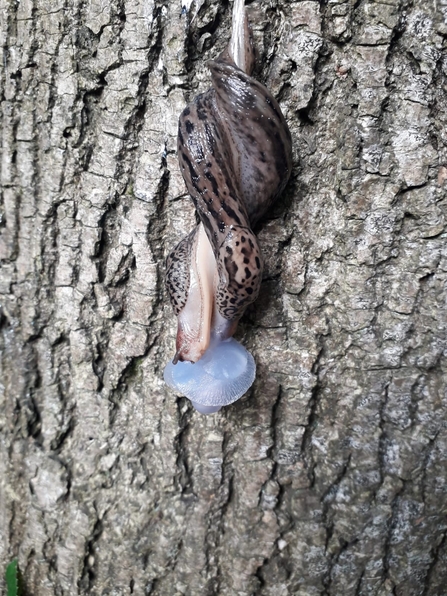
Leopard slugs at Bradfield Woods - Alex Lack
Yellow stagshorn
It’s clear how this fantastic fungus earned the name yellow stagshorn. It grows on tree stumps or fallen branches like this one seen this week at Reydon Wood nature reserve. This fungus is similar in appearance to coral fungi but has a much greasier texture.
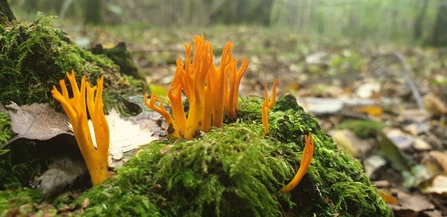
Yellow stagshorn – Dan Doughty
Black bryony
Black bryony is a climbing hedgerow and woodland edge plant that flowers between May and August. Later on, in autumn and early winter, it produces red, shiny berries as can be seen from this photograph at Knettishall Heath. Our only native member of the yam family, black bryony is actually highly poisonous. Black bryony is a twisting climber, but lacks the tendrils of the similar-looking white bryony, which is in fact no relative. Its leaves are heart-shaped and glossy, and their veins form a net pattern. Black bryony displays yellow-green, six-petalled flowers and shiny, red berries.
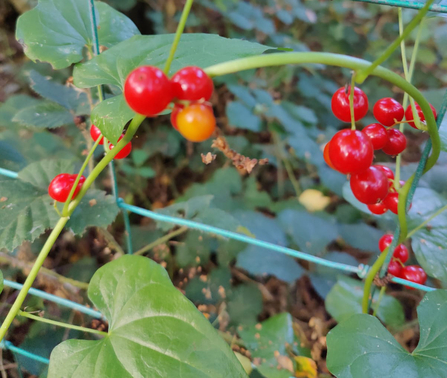
Black bryony at Knettishall Heath - David Stansfeld
Walk or waddle
Our West Suffolk teams have been busy improving access for people and wildlife. Volunteers cut and cleared the area known as ‘The Slough’ at Lackford Lakes affording better views for wildlife watchers visiting the reserve whilst opening late feeding habitat for overwintering birds. At the much more intimate ancient space of Bull’s Wood, Alex and his team installed new pedestrian gates as part of their winter works program.
Islands at Dingle Marshes
Warden Jamie has been cutting the islands at Dingle Marshes this week, this will provide short grassland serving as safe roosting space for waders and waterfowl in the autumn and winter months.
Jack snipe
Warden Gavin snapped this jack snipe from the tractor whilst topping at Carlton Marshes. The jack snipe is a small wading bird, similar to the more familiar common snipe. Unlike their cousins, jack snipe are just winter visitors to the UK, spending the summer breeding on waterlogged bogs in northern Europe. Jack snipe are secretive birds, often hidden in thick vegetation on marshes, wet grassland and in reedbeds. They use their long bill to probe the mud for insects, worms and even plant material, moving in a slight crouch and constantly bouncing up and down as if their legs were made of springs.
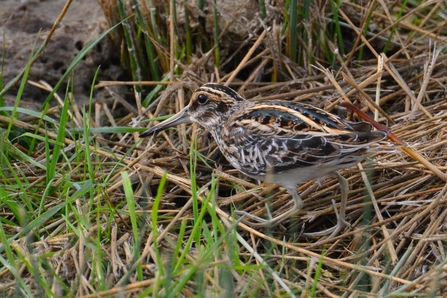
Jack snipe - Gavin Durrant
Hornet’s nest
This beautifully elaborate hornet’s nest has been buzzing with life at Hutchison’s Meadow this week. Much less aggressive than the common wasp, the hornet is an important pollinator and a predator of species that feed on plants and crops, so can also be a gardener's friend. This nest was found on the root plate of an old fallen oak, proving the value of leaving dead wood in situ where possible.
Before and after volunteer work party
Our volunteer team have been busy clearing birch scrub at Blaxhall Common. While scrub is valuable wildlife habitat in itself, some scrub clearance on heathland is essential to maintain the open habitat, and the resulting bare ground is important for rare heathland plants and invertebrates.


